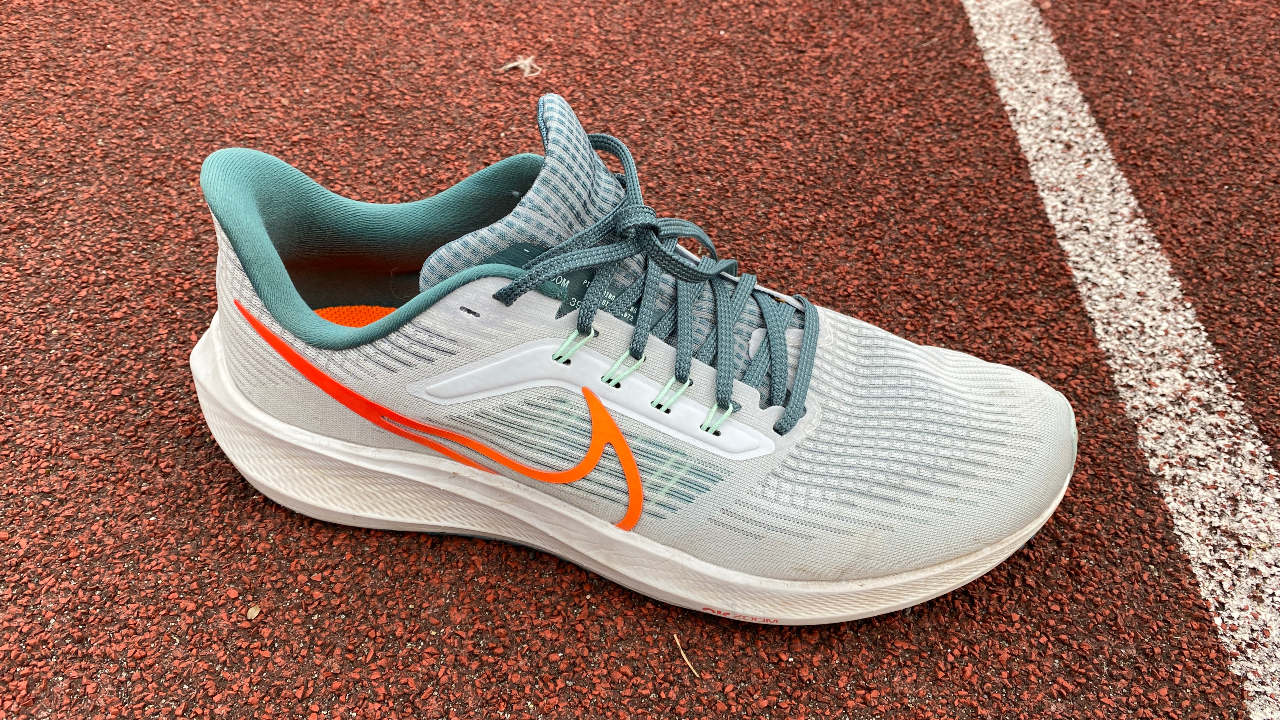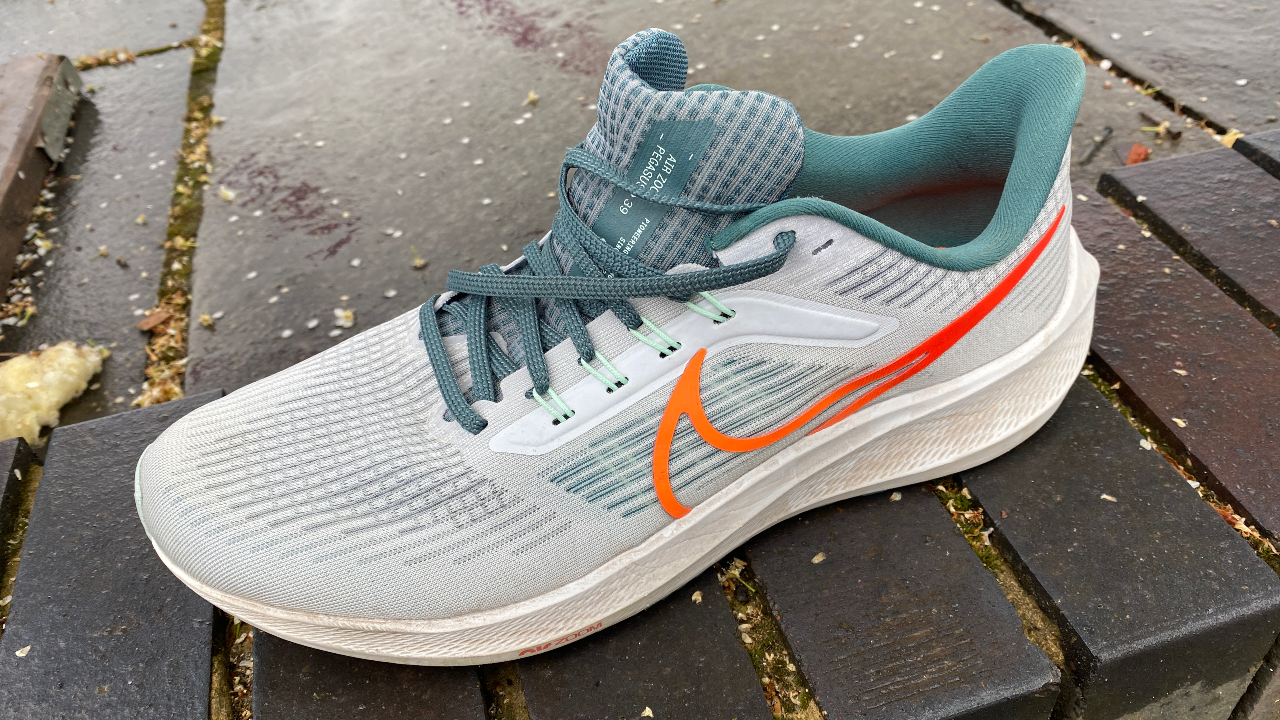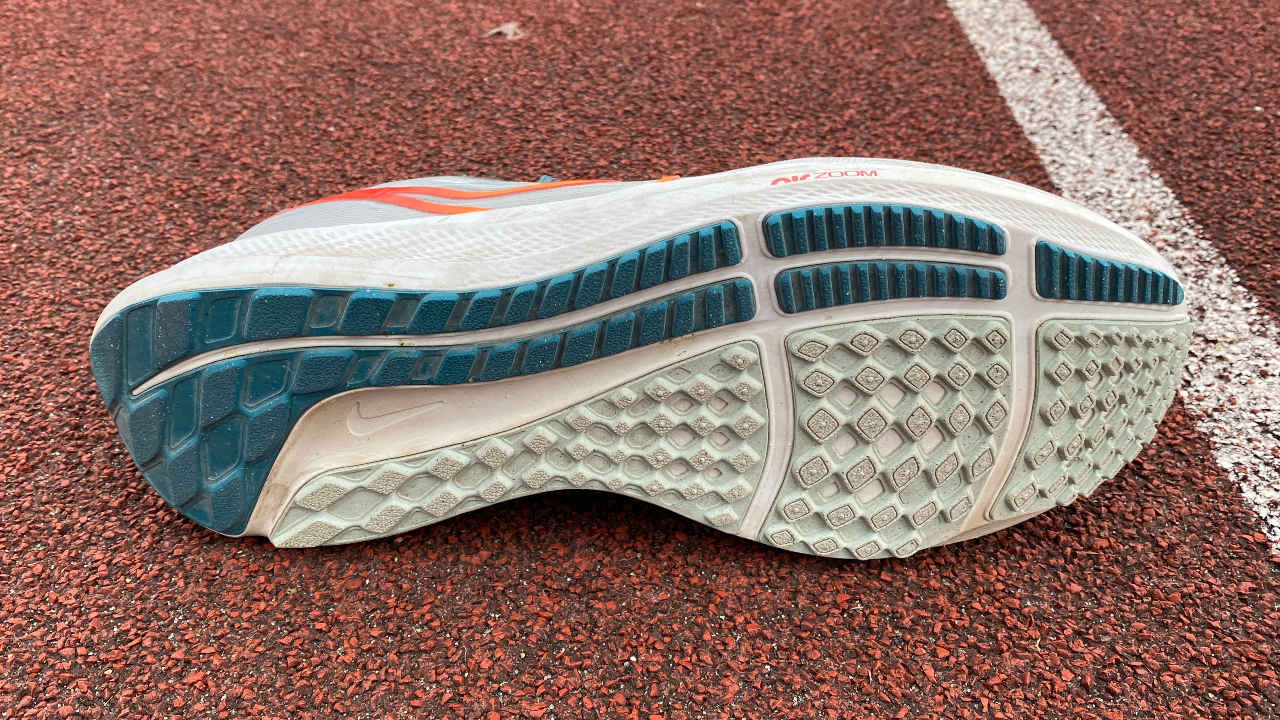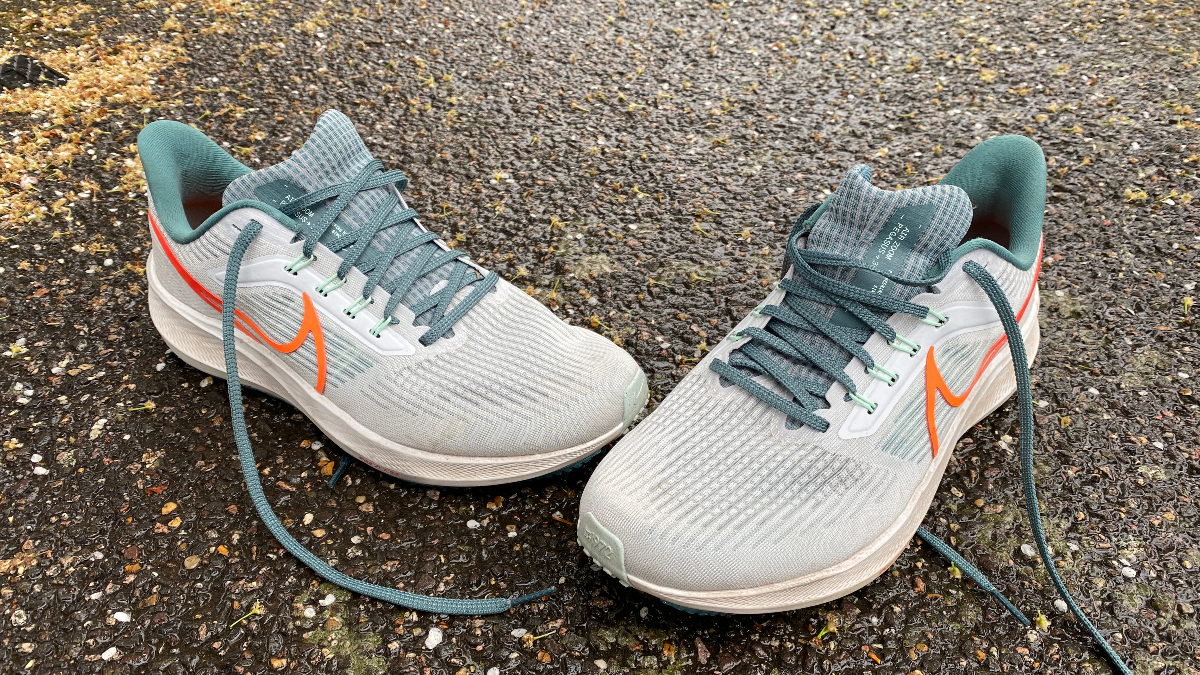Our Verdict
The Pegasus 39 is a better daily trainer than the Pegasus 38. It’s lighter and more suitable for speedy running while still being as comfortable. It deserves its place among the good daily trainers that are available, and the £110 price makes it great value, though there are better shoes to be found for less.
For
- Lighter than Pegasus 38
- Good value
- Comfortable and versatile
- Great outsole
Against
- Not the softest or bounciest ride
- Heavy for speedwork
You can trust Coach
Over the past two generations the Nike Pegasus changed from being a versatile shoe to more of a cushioned cruiser, adding weight and stack height. I liked the changes myself, but many long-term fans of the line found the Pegasus 37 and 38 were a step away from the line’s purpose – as a do-it-all daily trainer.
Nike’s changes to the Pegasus 39 make the shoe lighter and revamp the midsole to include two Air Zoom pods instead of one. The result is that the shoe feels more like the Pegasus 36 and is better-suited to fast running, while still being as comfortable as the 37 and 38. It’s in contention for the best all-rounder in our best Nike running shoes round-up, but doesn’t make the cut for the best running shoes.
Nike Air Zoom Pegasus 39 Review: Price And Availability
The Nike Pegasus 39 is available in the UK now and costs £109.95. It is one of the cheaper options in Nike’s range, with other cushioned shoes like the Infinity Run 3 and Invincible costing £144.95 and £164.95 respectively.
Buy men’s from Sports Shoes | Buy women’s from Sports Shoes | £109.95
Design And Fit
The changes Nike has made to the Pegasus start with the upper, which has been stripped back (compared with the 38) to have fewer overlays and be more breathable. Instead of the lace loops used on the 38 there is Nike’s Flywire system, which holds the midfoot securely in place as you run.

There is still a generous amount of padding on the tongue and around the heel. This is still a shoe designed for comfort as much as anything else, but overall the upper is less noticeable when you run in the Pegasus 39, which is a good thing. I found that the fit was the same as on the 38, and was happy in my normal running shoe size.
The midsole remains primarily made of Nike’s React foam, but where the Pegasus had one Air Zoom unit encased in the foam under the forefoot, the 39 has two, with the second pod found under the heel. This has been added to increase the responsiveness of the ride.
Sign up for workout ideas, training advice, reviews of the latest gear and more.
These changes to the upper and midsole have seen the Pegasus drop from 310g for the Pegasus 38 to 279g for the 39 (in my UK 9), a substantial and welcome weight loss.
That weight loss has also been achieved without reducing the rubber coverage on the shoe’s outsole, which is good because it’s one of the Pegasus 38’s strong points. The Pegasus 39 grips well in all conditions on the road, and is great to use on light trails as well.

How I Tested This Shoe
I have run just shy of 50km in the Pegasus 39, using it for a range of runs from a short, sharp track session up to a 22km long run. I have also tested the past five versions of the Pegasus extensively – here’s all our Nike Pegasus coverage if you want to dive down memory lane.
Running Performance
As someone who liked the Pegasus 37 and 38 as comfortable easy-run shoes, my main worry for the 39 was that the changes would make it feel less cushioned, and so I made my first run in the shoe an easy one. I’m pleased to report it is still a highly comfortable shoe, with the mainly-React midsole protecting my legs well from the impact of road running; it did not feel soft or squishy underfoot.
With my mind at ease, I used the Pegasus for general training runs at easy or steady paces, with the longest being a 90-minute long run covering around 22km. The shoe feels lighter on the foot than its predecessor, and that comes into play in long- or faster-paced runs when the lack of weight makes it easier to turn the legs over.
I didn’t notice much extra pop from the extra Air Zoom pod under the heel, though. The shoe still has a similar feel to the 38 for me, but the transition from heel to toe feels faster and more effortless with the weight being reduced.

To find out how it handled faster paces I used the Pegasus 39 for a short track session running a mile rep at around 10K-half marathon pace, plus sets of 3x300 and 2x200 sprints. I was surprised at how good it felt for the mile rep, and even though it did feel blocky and heavy when sprinting, the Pegasus 39 can handle this kind of speedwork fine if you are a one-shoe runner who doesn’t also have a speedier option to call on.
I found the Pegasus 39 to be more versatile and just as comfortable as the 38. It’s not a shoe with a dramatically bouncy or soft ride, and there are no modern twists like a plate in the midsole or a rocker design, but it’s a reliable option that works for a range of runs.
As with its predecessor, the Pegasus 39 also works well as a road-to-trail shoe on light trails during the warmer months when there won’t be too much mud to contend with. The outsole offers excellent grip and the rubber used will stand up to many hundreds of kilometres on varied terrain.

Is The Nike Pegasus 39 Worth It?
Whether you’re a long-term fan of the Pegasus line who didn’t like the past two versions, or a recent convert who did, I think you will enjoy the Pegasus 39. It retains the comfort of the recent editions while being snappier – and versatile in the style of older versions of the shoe.
At £109.95 it’s also good value, especially as the outsole rubber and React foam have proved to be durable in testing other Nike shoes over recent years. That price makes it the best-value option in Nike’s range ahead of the Infinity Run and Invincible, and also undercuts one main competitor in the Saucony Ride 15, another great daily trainer that costs £130.
There are cheaper options, though, including the excellent Puma Velocity Nitro 2, which has a livelier ride than the Pegasus 39 and costs £100. The Velocity Nitro 2 is my preferred pick, regardless of price, though the Pegasus 39’s firmer feel makes it more stable.
Another terrific value option is the Reebok Floatride Energy 4, which is £75. It’s a versatile daily trainer with a similar ride feel to the Pegasus 39, while being lighter as well as considerably cheaper.

Nick Harris-Fry is a journalist who has been covering health and fitness since 2015. Nick is an avid runner, covering 70-110km a week, which gives him ample opportunity to test a wide range of running shoes and running gear. He is also the chief tester for fitness trackers and running watches, treadmills and exercise bikes, and workout headphones.

